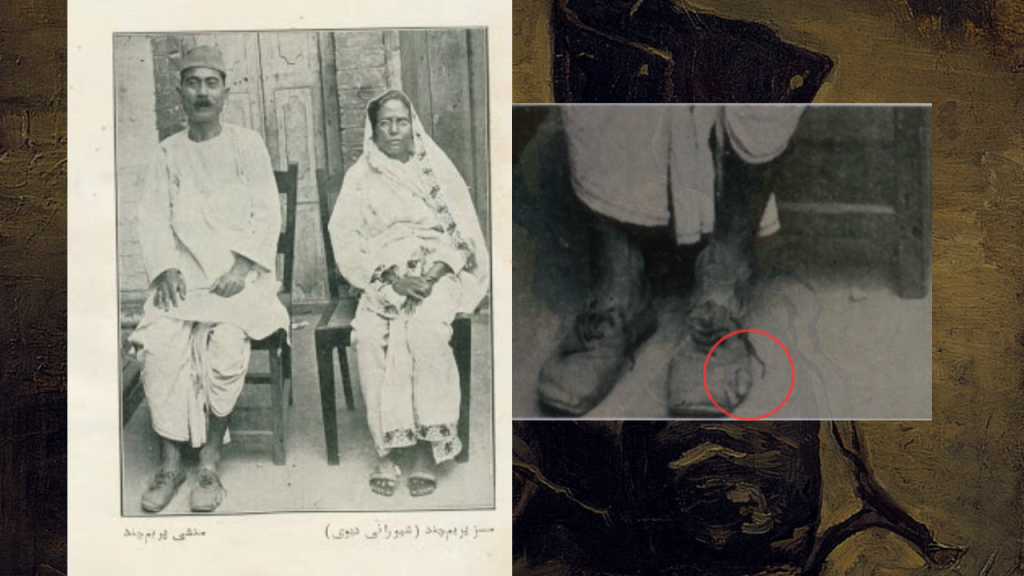Shoes have long been used as metaphors in art, conveying diverse meanings across cultures and historical periods. In Vincent van Gogh’s “A Pair of Shoes,” they reflect the artist’s struggles and working-class identity, while in Renaissance portraiture, luxurious shoes denote wealth and social status. Salvador Dalí’s “The Persistence of Memory” uses shoes to suggest transformation and the passage of time, paralleling Dorothy’s ruby slippers in “The Wizard of Oz” which symbolize self-discovery. Edgar Degas’ focus on ballet shoes highlights elegance and fetishism, a theme echoed in Manolo Blahnik’s contemporary designs that celebrate sexual allure and feminine power. In Indian miniatures and African masquerades, shoes signify cultural identity and tradition. Vanessa Beecroft’s performance art uses shoes to evoke memory and loss, a reminder also seen in Holocaust memorials where shoes represent the lives lost. In subcultures like punk rock, Doc Martens boots symbolise rebellion and resistance, illustrating the multifaceted significance of shoes in art as they evoke personal identity, cultural heritage, and social commentary.
“Premchand ke Fate Joote” is a famous satire by Harishankar Parsai, a renowned Hindi writer known for his wit and social commentary. In this work, Parsai humorously criticises the literary establishment and its treatment of literary figures, particularly referencing Munshi Premchand, one of the most celebrated writers in Hindi literature. The title itself, “Premchand ke Fate Joote,” translates to “Premchand’s torn shoes.” It metaphorically suggests the neglect or disregard faced by writers like Premchand after their initial glory fades.
Harishankar Parsai writes as he is looking at a picture of Premchand and his wife. In this picture, Premchand is wearing a dhoti-kurta, and there is a cap on his head. He is very thin, with a sunken face and prominent bones. From the picture, it is evident that he lived in poverty. He is wearing canvas shoes that are completely worn out, so much so that they are not properly tied and the toes of his left foot are visible. Seeing his condition, the author worries that if Premchand’s state was like this while having his photo taken, what must his condition have been in real life? Then he thought, could it be that Premchand led a dual life? But Premchand did not like pretence, so his private and public lives must have been the same. There would have been no difference between the situation shown in the photo and reality. That’s why he is sitting in the photo with certainty and nonchalance. He believed in ‘simple living, high thinking,’ so he was not troubled by poverty.
The author is troubled by the sarcastic smile on Premchand’s face. He wonders why Premchand did not refuse to be photographed in torn shoes. Then the author thinks that perhaps his wife insisted, which is why he agreed to be photographed in such shoes. The author wants to cry at Premchand’s miserable state, but the pain-filled sarcasm in his eyes prevents him from doing so. The author reflects that people often borrow shoes, clothes, and even wives for photographs, so why didn’t Premchand borrow someone’s shoes? He notes that people even wear perfume for photos so that the fragrance seems to emanate from the picture.
Parsai admits that his own shoe is also torn, but it is still intact on the surface. He takes great care to maintain appearances and never lets his toe peek out. He would never get photographed in such a worn-out shoe. The author is astonished by Premchand’s sarcastic smile and ponders its meaning. Did something terrible happen to him? Did Hori’s cow in “Godan” die, or did the blue cows eat up Halku’s crops? Did Madhav sell his wife’s shroud to buy liquor? Did Premchand have to take a long detour to avoid a creditor, causing his shoe to wear out? The author remembers the devotional poet-saint Kumbhandas, whose shoes also wore out from travelling to Fatehpur Sikri.
Suddenly, the author realizes that Premchand’s shoe did not wear out from a long detour but from kicking something hard all his life. Instead of avoiding obstacles, Premchand kept kicking at them. He did not like to compromise. Just as Hori could not abandon his principles, which perhaps were his means of salvation, Premchand’s finger points towards something vile that he kicked repeatedly, wearing out his shoes. He is smiling at those who wear out their soles to hide their toes.
Through this piece, Parsai not only pays homage to Premchand but also critiques the fickleness of public and literary acclaim. His satire is sharp yet humorous, aiming to provoke thought and reflection on true worth. Literally, it refers to the physical condition of Premchand’s shoes, suggesting a lack of care or attention during his life. Metaphorically, these “torn shoes” symbolise the neglect faced by intellectuals and artists, highlighting how their contributions may be under-appreciated or unrecognised until after their passing. Parsai uses humour and irony to provoke thought on the transient nature of fame and the societal tendency to revere figures only retrospectively. His satire critiques the literary and artistic establishment and societal attitudes towards creative people, questioning the true worth and recognition accorded to them during their lifetimes versus posthumously. By focusing on something as mundane as a pair of shoes, Parsai cleverly invites readers to contemplate deeper issues of cultural appreciation, intellectual legacy, and the paradoxical treatment of creative minds. “Premchand ke Fate Joote” thus stands not only as a humorous commentary but also as a reflection on the complexities of fame, artistic recognition, and the ever-lasting value of literary/artistic contributions within society’s shifting perspectives. Through his writing, Parsai challenges readers to reconsider how we honour and value the voices that shape our cultural and intellectual landscapes, urging a more thoughtful and equitable assessment of literary and intellectual legacies.

Iftikar Ahmed is a New Delhi-based art writer & researcher.





